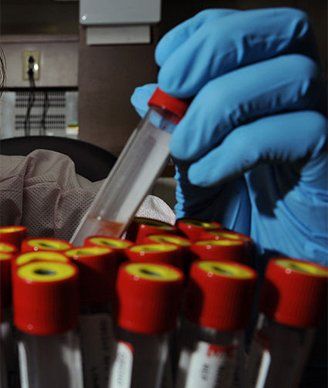Blood Test Accurate in Later Stage Lung Cancer Diagnosis
New research has shown that a new assay for measuring circulating tumor DNA (ctDNA) could detect essentially all stage II-IV non-small-cell lung cancers (NSCLC).
Simple blood tests for cancer diagnosis and post-treatment assessment are getting closer all the time.

Simple blood tests for cancer diagnosis and post-treatment assessment are getting closer all the time. New research has shown that a new assay for measuring circulating tumor DNA (ctDNA) could detect essentially all stage II-IV non-small-cell lung cancers (NSCLC), and is even about 50% sensitive in finding stage I NSCLC as well.
“Analysis of ctDNA has the potential to revolutionize detection and monitoring of tumors,” wrote investigators led by senior study author Maximilian Diehn, MD, PhD, of Stanford University School of Medicine, in Nature Medicine. “Noninvasive access to cancer-derived DNA is particularly attractive for solid tumors, which cannot be repeatedly sampled without invasive procedures.”
Previous efforts to measure ctDNA have lacked sufficient sensitivity to be truly useful for either monitoring or diagnosis. The new work improves on the methods by using deep sequencing, known as CAPP-Seq, which the authors called “an economical and ultrasensitive method for quantifying ctDNA.” The approach “combines optimized library preparation methods for low DNA input masses with a multiphase bioinformatics approach to design a ‘selector’ consisting of biotinylated DNA oligonucleotides that target recurrently mutated regions in the cancer of interest.” In short, the test should be able to pick up remarkably low levels of circulating tumor DNA.
To test this assay, the investigators used CAPP-Seq on 18 adults, including 5 healthy controls and 13 with NSCLC of varying stages. They detected ctDNA in 100% of the patients with stage II-IV NSCLC, and in 50% of those patients with stage I disease. They found a strong correlation between levels of ctDNA and tumor volume, and they could distinguish between residual disease and treatment-related imaging changes.
To measure the test’s potential as a diagnostic, the researchers blinded themselves to the specific samples’ genetic mutations. They were able to correctly identify 100% of EGFR and KRAS mutations at allelic fractions greater than 0.1% with 99% specificity. This suggests the assay could be used as a biopsy-free method for tumor genotyping as well.
“To our knowledge, CAPP-Seq is the first… method for ctDNA analysis that achieves both an ultralow detection limit and broad patient coverage at a reasonable cost,” they wrote. “CAPP-Seq could be routinely applied clinically and has the potential for accelerating the personalized detection, therapy, and monitoring of cancer.”
In theory this type of test could be optimized to monitor and diagnose many other malignancies along with NSCLC, and other research groups are working on it as well. In a study published in February in Science Translational Medicine, a different method for measuring ctDNA showed promising results for pancreatic, ovarian, colorectal, and many other malignancies.